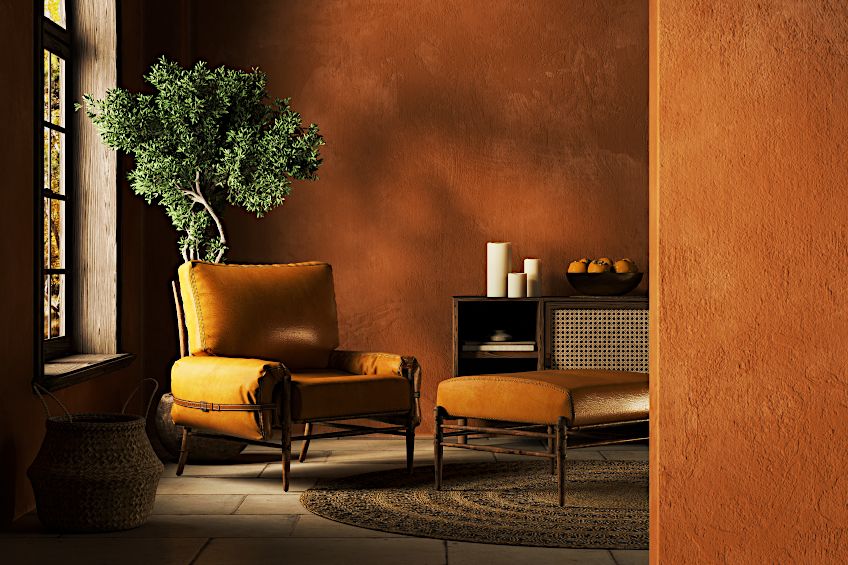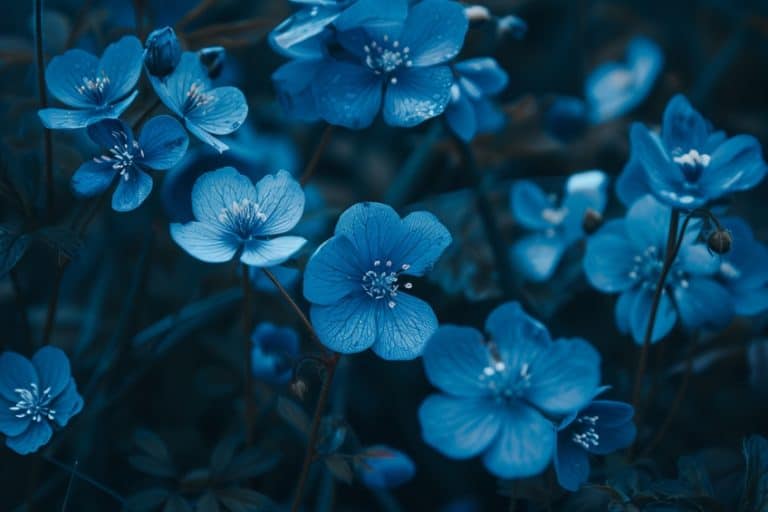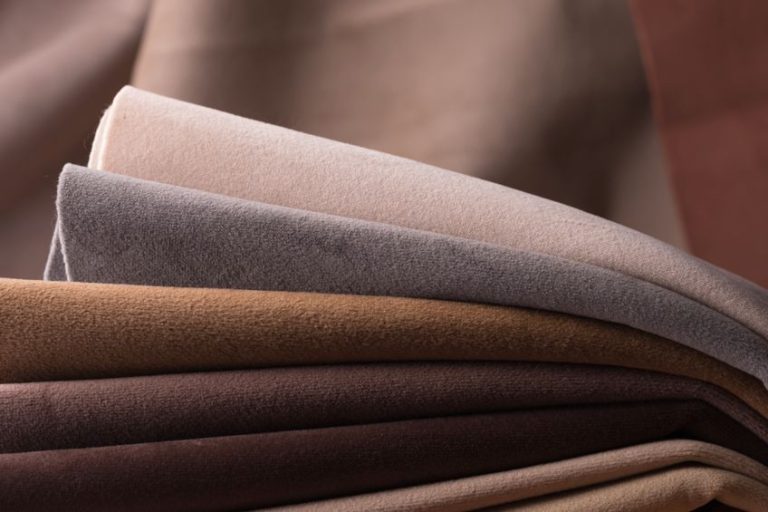Burnt Sienna Color – A Deep Dive Into Sienna Color Theory
Burnt sienna is a pigment of a reddened brown color produced through the heating of raw sienna clay. Through a process called calcination, raw sienna is heated to produce a deeper hue known as burnt sienna. It is an earth color whose thematic elements include nature, dirt, and the Earth itself. If you want to learn more about this pigment and its illustrious history throughout the ages of art, you have come to the right place!
Table of Contents
Color Jargon
If you do not have a background in art theory, you may find it hard to understand some of the color terminologies that this article will be throwing at you. For this reason, we thought it prudent that we begin with a breakdown of some important definitions worth understanding before discussing the burnt sienna color. If, on the other hand, you are already familiar with this terminology, feel free to skip this chapter.

Hue
Designers and visual artists alike are quite fond of using this term interchangeably with the word “color”. This is a relatively harmless commensuration of terms for the most part but not when it comes to color theory.
See, in color theory, we use the term “hue” to describe any particular pigment’s relationship to the six primary colors (blue, green, violet, red, yellow, and orange).
A pigment’s hue is decided by which of these six colors it most closely resembles. This is best done using a color wheel which more clearly displays a pigment’s closest proximity to any of the primary colors. Burnt sienna paint, for example, is of a yellowish-red hue because it stands in between red and yellow on the color wheel.
Shade
Each individual hue of every color can produce different shades when mixed with the color black. The shade of a color is thus determined by the amount of black added. The more black that is added, the darker the color’s shade becomes. Artists will typically apply shade to their colors to produce darker hues to represent how these colors look under a reduced light source. For this reason, shading is often used to illustrate the effect of shadows against surfaces.

Tint
You can think of tints as antithetical to shades. A color’s tint is determined by the amount of white added. Consequent to the color white’s influence on relative saturation, mixing it with another color will “tint” it lighter.
This may give off the sense that a color is made brighter but, in actuality, what tinting does is make a color paler.
Tone
Tones sit between shades and tints as they refer to the mixing of the color grey into a hue. Many designers often use the art of toning to make their designs appear more professional on account of how the greyscale can make colors seem more sophisticated. One critical thing to understand about tones, however, is that they only apply to the shades and tints of grey that can be produced through the mixing of white and black.

Warm and Cool Colors
Put plain and simple, this term is used to describe colors that bear a resemblance to objects and phenomena found in the natural world that we associate with heat or warmth. Good examples include sunrises and fire. Red and yellow are considered warm colors and, since they comprise the hue of burnt sienna, this earth pigment is also considered warm.
Ice, water, rain, the night sky, and anything else found in nature that we closely associate with coldness are what we compare cool colors to. These include green, purple, and blue.
What Is Sienna?
Raw sienna is a brown pigment with yellow notes used in painting. It is an earth pigment composed almost entirely of limonite iron oxide, a chemical composed of bonded oxygen and iron particles whose presence in sienna is responsible for that yellow tinge. The iron oxide in raw sienna is offset with 10% manganese oxide, a blackish brown chemical that darkens the pigment enough for us to draw a distinction between sienna and yellow ochre. Sienna color is also similar to another earth pigment called umber which, despite also being composed of iron oxide and manganese, contains a higher percentage of the latter element and thus presents itself as a darker, greener brown.

Burnt Sienna Color Table
| Sienna Shade | Sienna Color Hex Code | CMYK Sienna Color Code | RGB Sienna Color Code | Sienna Color |
| Burnt Sienna | #e97451 | 0, 50, 65, 9 | 233, 116, 81 |
Sienna Color History
Sienna is one of the most renowned earth pigments which sees extensive use as a painting medium in all manners of art from fine, to decorative, to commercial. Its name is inherited from the Italian province of Siena where, during the Renaissance period, the pigment was primarily mined and manufactured. It was during this period of transition from classical antiquity to modernity that sienna first became, as it still is today, one of the most popularly used pigments of brown among artists worldwide. Its Italian names include “terra gialla” and “terra rosa”, but its most popular moniker is terra di Siena, meaning “Siena earth”.
In 1760, the pigment would make its way into the English lexicon as “sienna”.
One of the more notable aspects of the development of art during the Renaissance period was the push toward the institutionalization of art technique theory. The most syndicated author of such theory at the time, Giorgio Vasari, wrote extensively about sienna pigment. Rembrandt, one of the period’s most notable painters, incorporated sienna as a staple among the many earth pigments found in his palette. Between the 1600s and 19000s, sienna prevailed as one of the standard browns used in painting worldwide.
But the history of sienna dates back long before the era of the Masters. In fact, sienna was even popular among the ancient Romans who mined the pigment in the regions bordering Arcidosso, a place that today forms part of Grosseto of modern-day Tuscany, which once long ago belonged to the Sienese (hence, again, its name). In Ancient Rome, earth pigments such as sienna were prolifically used in fresco murals, a form of painting whereby the art itself becomes integral to the structure of the surface of a wall by mixing pigments with wet lime plaster.
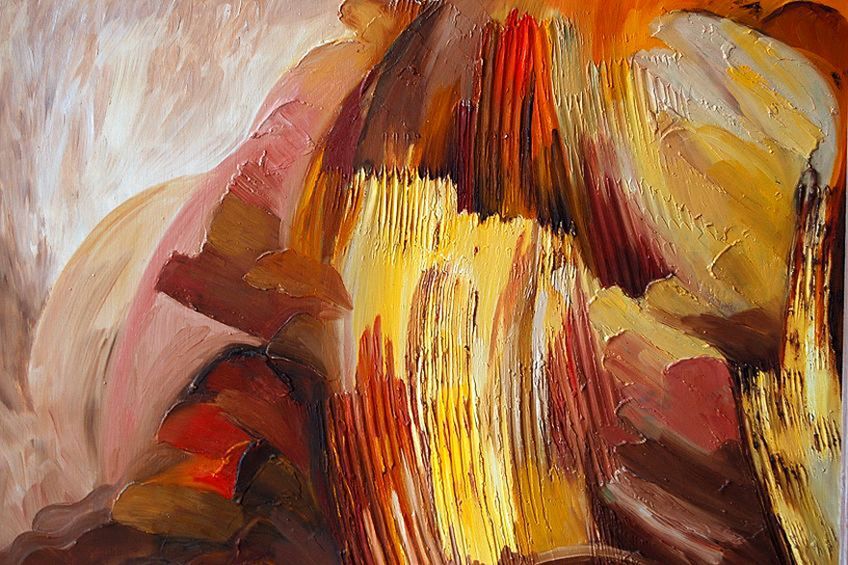
This, however, is not where we find the earliest examples of earth pigments in art. There are numerous cases of paintings made with pigments very similar to sienna found in India’s ancient Ajanta Caves which date back to the 2nd century B.C. The oldest known instances of art made with earth pigments can be found in the form of cave paintings that date back further than 30 000 years ago from the time of Early Man. Sienna is thus considered, next to ochre and yellow umber, as one of the oldest earth pigments discovered by man and used for the purpose of artistic expression.
But the popularity of sienna did, however, come at a cost. By the time the 1940s rolled around, the once plentiful Siena mines of Italy had run completely dry. But this only serves to further illustrate sienna’s significance within the history of traditional arts.
Modern Sienna Color
As of today, sienna is no longer sourced in mainland Italy. Instead, the pigment is mined from more recently discovered deposits located off Italy’s coast on the Sicilian and Sardinian Islands. Other more recently discovered locations wherein raw sienna deposits are plentiful include the Appalachian Mountains in North America. Additionally, deposits of the pigment are also located and mined in the Ardennes of Belgium and the Hartz Mountains of Germany. This being said, however, these contemporary deposits of sienna are dissimilar from classic raw sienna.
For instance, these pigments are considered to differ in texture from the original and to be of a different, less pure hue.
This brings us to the modern era, where pigment producers came to realize that the natural availability of this still-popular pigment is bound to expire soon enough. This has prompted companies such as Windsor and Newton to experiment with the production of synthetic alternatives. Through the miracle of modern science and the ingenuity that often comes through desperation, pigment producers were in fact able to create a synthetic version of sienna that exactly matches the original pigment’s hue and transparency. But, with artificial sienna now flooding the paint market, sourcing natural raw sienna has become ever-increasingly difficult.
How to Make Burnt Sienna
To understand how to make burnt sienna, you must first understand calcination, which is a process through which substances such as ores and oxides are heated. This can be done for a number of reasons including for dehydration, the oxidization of sulfates, the decomposition of carbonate, and for the eradication of organic matter. Calcination involves placing substances in a cylindrical steel container which is then rotated within a furnace where the temperatures will alter the chemical composition of said substance.
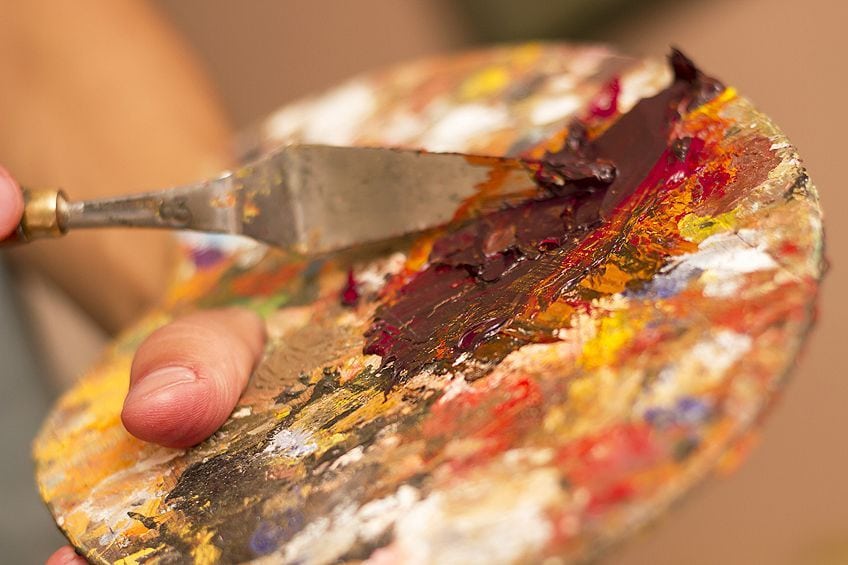
For the production of the burnt sienna color, raw sienna is calcinated for a time until the iron oxide begins to lose its moisture. This process of dehydrating the iron oxide particles in raw sienna will cause these particles to turn into hematite. This causes the sienna clay to develop redder hues, giving it that distinctive dark brown color. In modern times, we use calcinators built for this specific purpose to produce the burnt sienna color.
It is theorized that artists during the Renaissance period discovered how to produce burnt sienna by observing the effect that heat had on raw sienna clay during the kilning part of pottery making.
How to Create Burnt Sienna Paint by Mixing Primary Colors
While cleverly combining the colors orange and purple can produce the burnt sienna color, this process may require more time, experience, and resources compared to just working with the primary colors. Since the three primary colors blue, red, and yellow can be used to create any other color on the RYB color wheel, having them on hand allows you to avoid inundating yourself with paint supplies.

To create the burnt sienna color using these colors, you can start by getting them all onto a palette in preparation for mixing. Start off with a healthy dollop of yellow before slowly mixing in some red until the hue changes to a yellowish orange. After this has been achieved, you should begin adding tiny drops of blue until the hue darkens enough to form burnt sienna paint. Be sure to go slowly on the blue – you can always add but never subtract.
And there you have it! This has been your comprehensive guide to burnt sienna. By now, you should have a decent understanding of sienna’s history, how it is turned into its burnt sienna variant, and how to mix the color yourself!
Frequently Asked Questions
Is Burnt Sienna Expensive?
Given the rarity of natural, pure sienna deposits in modern times on account of how much of it has been mined over the years, it has become difficult to source the original pigment without it costing an arm and a leg. That being said, however, there are many synthetic versions of burnt sienna available online at relatively affordable prices that range roughly between $4 to $15 per fluid ounce.
What Color Is Sienna Complementary to?
The inverse color of burnt sienna is blue-green. According to this as well as burnt sienna’s placement on the color wheel, its complementary color is called Picton blue. You can place these colors next to each other to produce the highest degree of contrast between burnt sienna and any other color.
What Color Is Sienna Best Paired With?
Burnt sienna is a warm color that pairs exceptionally well with several colors in this bracket. Pairing burnt sienna with colors such as yellow, red, and orange can produce warm, earthy outcomes. You can, however, still choose to pair burnt sienna with cooler colors for a nice contrast that is reminiscent of the color palettes we can observe in nature. The colors blue and green, or a mixture between the two, make for the best options in this regard.
In 2005, Charlene completed her Wellness Diplomas in Therapeutic Aromatherapy and Reflexology from the International School of Reflexology and Meridian Therapy. She worked for a company offering corporate wellness programs for a couple of years, before opening up her own therapy practice. It was in 2015 that a friend, who was a digital marketer, asked her to join her company as a content creator, and this is where she found her excitement for writing.
Since joining the content writing world, she has gained a lot of experience over the years writing on a diverse selection of topics, from beauty, health, wellness, travel, and more. Due to various circumstances, she had to close her therapy practice and is now a full-time freelance writer. Being a creative person, she could not pass up the opportunity to contribute to the Art in Context team, where is was in her element, writing about a variety of art and craft topics. Contributing articles for over three years now, her knowledge in this area has grown, and she has gotten to explore her creativity and improve her research and writing skills.
Charlene Lewis has been working for artincontext.org since the relaunch in 2020. She is an experienced writer and mainly focuses on the topics of color theory, painting and drawing.
Learn more about Charlene Lewis and the Art in Context Team.
Cite this Article
Charlene, Lewis, “Burnt Sienna Color – A Deep Dive Into Sienna Color Theory.” Art in Context. October 6, 2022. URL: https://artincontext.org/burnt-sienna-color/
Lewis, C. (2022, 6 October). Burnt Sienna Color – A Deep Dive Into Sienna Color Theory. Art in Context. https://artincontext.org/burnt-sienna-color/
Lewis, Charlene. “Burnt Sienna Color – A Deep Dive Into Sienna Color Theory.” Art in Context, October 6, 2022. https://artincontext.org/burnt-sienna-color/.


